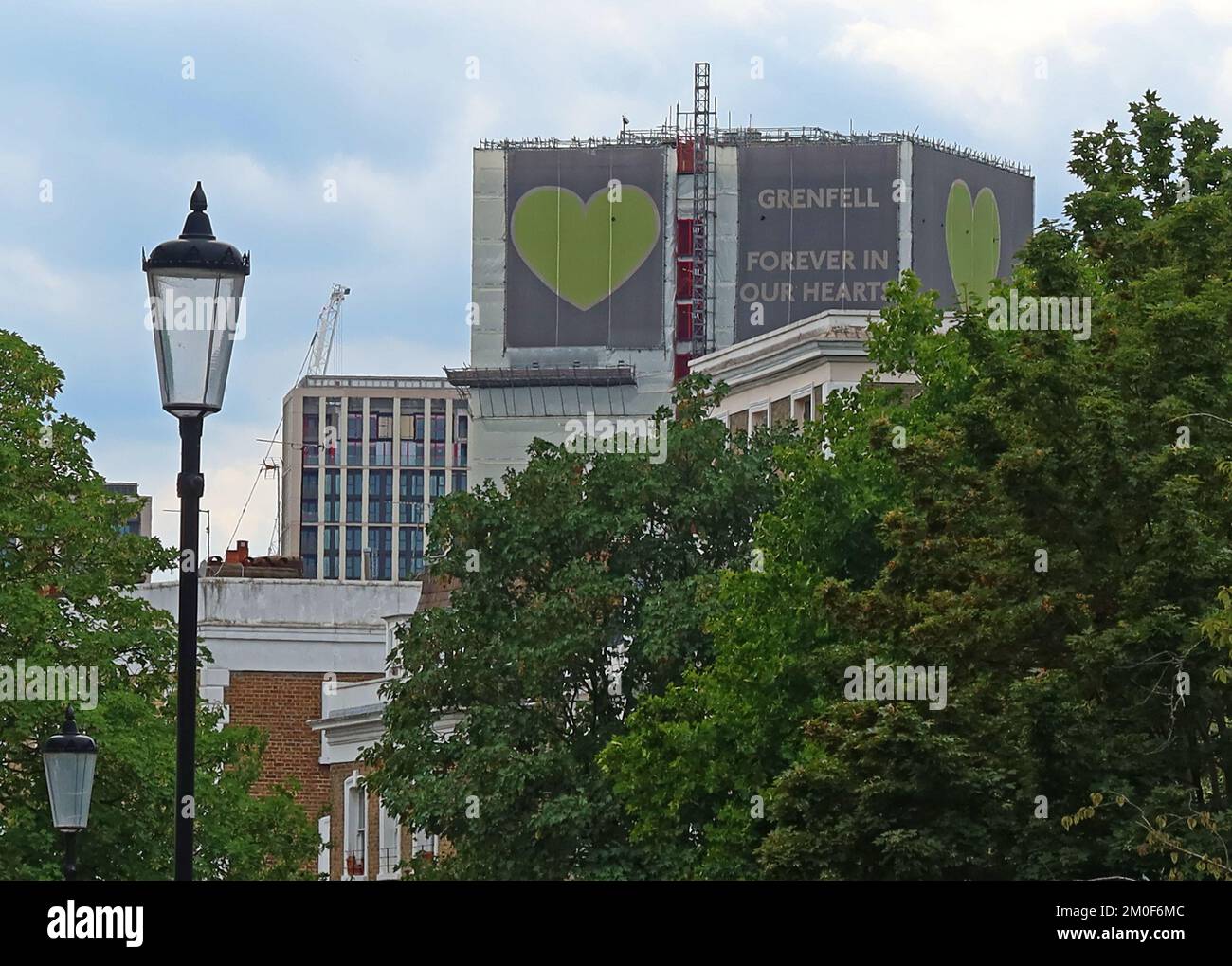Grenfell tower in Notting Dale ward, North Kensington, as seen from more affluent Notting Hill, RBKC, London, England, UK, W11 9AB

Image details
Contributor:
Tony Smith / Alamy Stock PhotoImage ID:
2M0F6MCFile size:
35.5 MB (1.1 MB Compressed download)Releases:
Model - no | Property - noDo I need a release?Dimensions:
4164 x 2976 px | 35.3 x 25.2 cm | 13.9 x 9.9 inches | 300dpiDate taken:
23 July 2022Location:
Notting Hill, RBKC, London, England, UK, W11 9ABMore information:
On 14 June 2017, a high-rise fire broke out in the 24-storey Grenfell Tower block of flats in North Kensington, West London, at 00:54 BST and burned for 60 hours. 72 people died, two later in hospital, with more than 70 injured and 223 escaping. It was the deadliest structural fire in the United Kingdom since the 1988 Piper Alpha oil-platform disaster and the worst UK residential fire since World War II. The fire was started by an electrical fault in a refrigerator on the fourth floor. This spread rapidly up the building's exterior, bringing flame and smoke to all residential floors, accelerated by dangerously combustible aluminium composite cladding and external insulation, with an air gap between them enabling the stack effect. The fire was declared a major incident, with more than 250 London Fire Brigade firefighters and 70 fire engines from stations across London involved in efforts to control it and rescue residents. More than 100 London Ambulance Service crews on at least 20 ambulances attended, joined by specialist paramedics from the Ambulance Service's Hazardous Area Response Team. The Metropolitan Police and London's Air Ambulance also assisted the rescue effort. The fire is the subject of multiple complex investigations by the police, a public inquiry, and coroner's inquests. Among the many issues investigated are the management of the building by the Kensington and Chelsea London Borough Council and Kensington and Chelsea TMO (which was responsible for the borough's council housing), the responses of the Fire Brigade, other government agencies, deregulation policy, building inspections, adequate budgeting, fire safety systems, the materials used, companies installing, selling and manufacturing the cladding, and failures in communications, advice given or decisions made by office holders. In the aftermath of the fire, the council's leader, deputy leader and chief executive resigned, and the council took direct control of council housing from the KCTMO.